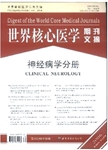阿尔茨海默病与UBQLN1变异之间的家系关联性
Family-based association between alzheime- r's disease and variants in UBQLN1作者机构:Genetics and Aging Research Unit MINDMGH-East 114 16th St. Charlestown MA 02129United States Dr.
出 版 物:《世界核心医学期刊文摘(神经病学分册)》 (Digest of the World Core Medical Journals:Clinical Neurology)
年 卷 期:2005年第1卷第8期
页 面:4-4页
学科分类:1002[医学-临床医学] 100203[医学-老年医学] 10[医学]
主 题:阿尔茨海默病 UBQLN1 同胞群 单核苷酸多态性 发病风险 功能效应 心理健康研究 转录体 脑标本 单体型
摘 要:BACKGROUND: Recent analyses suggest that the known Alzheimer’s disease genes account for less than half the genetic variance in this disease. The gene encodi ng ubiquilin 1 (UBQLN1) is one of several candidate genes for Alzheimer’s disea se located near a well-established linkage peak on chromosome 9q22. METHODS:We evaluated 19 single-nucleotide polymorphisms in three genes within the chromoso me 9q linkage region in 437 multiplex families with Alzheimer’s disease from th e National Institute of Mental Health (NIMH) sample (1439 subjects). We then tes ted the single-nucleotide polymorphisms showing a positive result in an indepen dently identified set of 217 sibships discordant for Alzheimer’s disease (Conso rtium on Alzheimer’s Genetics [CAG] sample; 489 subjects) and assessed the func tional effect of an implicated single-nucleotide polymorphism in brain tissue f rom 25 patients with Alzheimer’s disease and 17 controls. RESULTS: In the NIMH sample, we observed a significant association between Alzheimer’s disease and v arious single-nucleotide polymorphisms in UBQLN1. We confirmed these associatio ns in the CAG sample. The risk-conferring haplotype in both samples was defined by a single intronic single-nucleotide polymorphism located downstream of exon 8. The risk allele was associated with a dose-dependent increase in an alterna tively spliced UBQLN1 (lacking exon 8) transcript in RNA extracted from brain sa mples of patients with Alzheimer’s disease. CONCLUSIONS: Our findings suggest t hat genetic variants in UBQLN1 on chromosome 9q22 substantially increase the ris k of Alzheimer’s disease, possibly by influencing alternative splicing of this gene in the brain.



